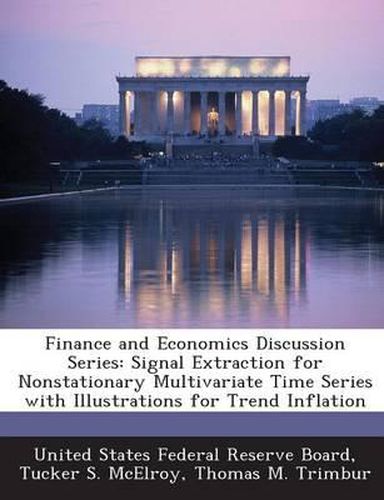Readings Newsletter
Become a Readings Member to make your shopping experience even easier.
Sign in or sign up for free!
You’re not far away from qualifying for FREE standard shipping within Australia
You’ve qualified for FREE standard shipping within Australia
The cart is loading…






This paper advances the theory and methodology of signal extraction by introducing asymptotic and finite sample formulas for optimal estimators of signals in nonstationary multivariate time series. Previous literature has considered only univariate or stationary models. However, in current practice and research, econometricians, macroeconomists, and policy-makers often combine related series - that may have stochastic trends–to attain more informed assessments of basic signals like underlying inflation and business cycle components. Here, we use a very general model structure, of widespread relevance for time series econometrics, including flexible kinds of nonstationarity and correlation patterns and specific relationships like cointegration and other common factor forms. First, we develop and prove the generalization of the well-known Wiener-Kolmogorov formula that maps signal-noise dynamics into optimal estimators for bi-infinite series. Second, this paper gives the first explicit treatment of finite-length multivariate time series, providing a new method for computing signal vectors at any time point, unrelated to Kalman filter techniques; this opens the door to systematic study of near end-point estimators/filters, by revealing how they jointly depend on a function of signal location and parameters. As an illustration we present econometric measures of the trend in total inflation that make optimal use of the signal content in core inflation.
$9.00 standard shipping within Australia
FREE standard shipping within Australia for orders over $100.00
Express & International shipping calculated at checkout
Stock availability can be subject to change without notice. We recommend calling the shop or contacting our online team to check availability of low stock items. Please see our Shopping Online page for more details.
This paper advances the theory and methodology of signal extraction by introducing asymptotic and finite sample formulas for optimal estimators of signals in nonstationary multivariate time series. Previous literature has considered only univariate or stationary models. However, in current practice and research, econometricians, macroeconomists, and policy-makers often combine related series - that may have stochastic trends–to attain more informed assessments of basic signals like underlying inflation and business cycle components. Here, we use a very general model structure, of widespread relevance for time series econometrics, including flexible kinds of nonstationarity and correlation patterns and specific relationships like cointegration and other common factor forms. First, we develop and prove the generalization of the well-known Wiener-Kolmogorov formula that maps signal-noise dynamics into optimal estimators for bi-infinite series. Second, this paper gives the first explicit treatment of finite-length multivariate time series, providing a new method for computing signal vectors at any time point, unrelated to Kalman filter techniques; this opens the door to systematic study of near end-point estimators/filters, by revealing how they jointly depend on a function of signal location and parameters. As an illustration we present econometric measures of the trend in total inflation that make optimal use of the signal content in core inflation.